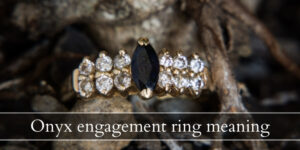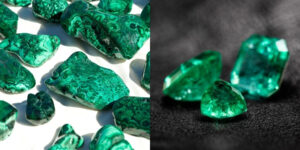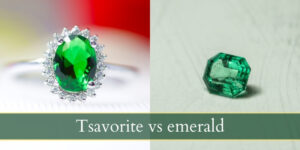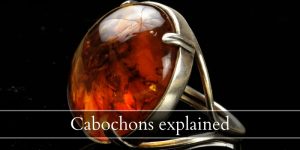Whenever you’re looking for that perfect diamond you have a lot of tough choices to make, one of them being the exact cut style of your diamond. Whether it’s for yourself or for your fiancee, a diamond’s shape can impact the beauty of the final ring. So let’s take a look at two quite similar diamond cuts and discuss their key differences.
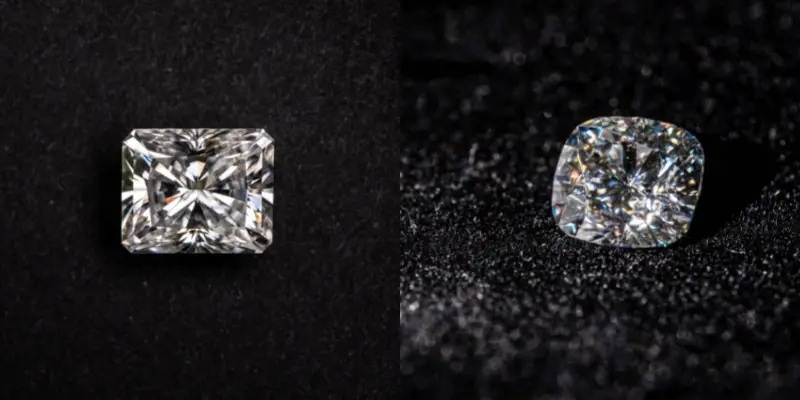
Radiant cut vs cushion cut
Radiant cut diamonds look more angular than cushion cuts, and they have more brilliance (white light) than fire (rainbow). Cushion cuts are far more popular and thus a bit more expensive than radiant cuts, but you will also find many variations on the cushion cut while the radiant has no real variations. This makes finding the ideal diamond for you much easier if you’re looking for a cushion cut as you simply have more diamonds to choose from.
Both cushion and radiant cut work best in a prong setting on a plain band to showcase the great structure of the cut. A halo would only distract from the radiant and the cushion’s beauty. A micropave band might work, as long as it is dainty and does not distract from the solitaire diamond.
What is radiant cut ?
Radiant cut diamonds are a rectangle cut, derived from an emerald cut with added brilliance through shard cuts in the pavilion. This makes radiant cuts look a bit more angular, and a great option for those who admire the emerald cut but want a little more bang for their buck. The total facet count for radiant cuts is 70.
These diamond cuts aren’t the easiest to find, compared to round brilliants and princess cuts. If your diamond has a bit of a color, like a light pink diamond or a light green, the radiant will lighten the color further as it tends to reflect more white than color.
The radiant cut was invented and perfected in the late ’70s to early ’80s by diamond cutter Henry Grossbard, so this might be part of why the radiant isn’t as popular as other cuts just yet.
What is cushion cut ?
The cushion cut has a long history, as it’s derived from the old mine cut. As time went on this cut was improved upon, and there are a few variations. The current traditional cushion cut is nearly square (1.10:1 ratio) with very rounded corners and slightly rounded sides as well. The total facet count for the traditional cushion is 58.
1. Radiant cuts are more angular, cushion cuts more rounded
A key difference between radiant cuts and cushion cuts is their first impression on you. A radiant will appear more angular, with more geometric patterns than a cushion cut. A cushion cut will appear a bit more ‘organic’, with curves rather than sharp angles.
This effect is amplified when you look straight through the table of both diamonds. A radiant tends to have more narrow and long pavilion facets, while the cushion tends to have alternating wider and some narrow pavilion facets. Elongated cushion cuts may even appear to have a sort of circle or set of concentric facets on the pavilion.
2. Cushion cuts have more fire, radiants are more brilliant
A result of those different facets on the pavilion is the fire vs brilliance in radiants and cushion cuts. The wider facets of a cushion cut tend to show more fire than brilliance, while the more narrow and long facets of the radiant tend to show more brilliance.
This results in radiant cuts looking more white and bright, while cushion cuts offer a more classic diamond sparkle (white and rainbow light).
3. Radiant cuts have far less variations than cushion cuts
Radiant cuts don’t have many variations on the traditional or main cut. There are shorter radiants, so less elongated and more of a square shape, but their facets on the pavilion are still the same. Some radiant cuts have longer narrows, which form an X on the pavilion that reach to all 4 corners of the radiant. That variation tends to work with the light a bit better, but the differences is not significant.
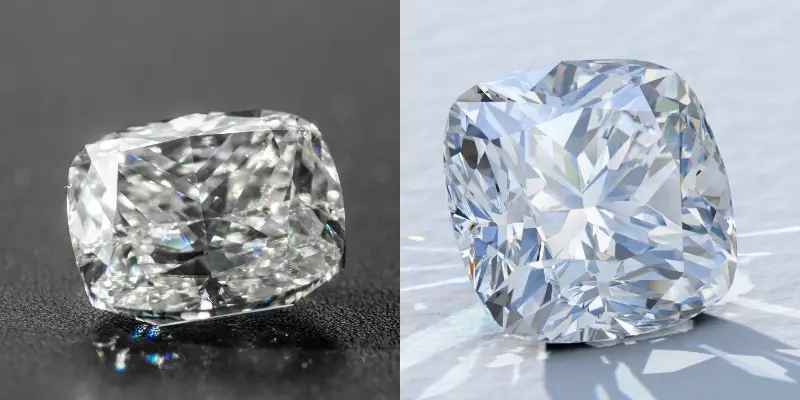
Meanwhile cushion cuts have been modified and improved upon quite a lot. The first modifications are in terms of ratio. The usual ratio for a cushion cut is 1.10:1, and elongated can go for as much as 1:36. There are also cushion cuts with and without rounded edges, and some of them have edges that are so rounded they might be mistaken for a short oval cut.
So there are plenty more options for a cushion cut than for a radiant cut, which is great because it might just be those extra facets or rounded edge that help you decide.
4. Cushion cuts are more popular than radiant cuts
If you’re looking for something that is currently in demand, then cushion cuts are the ones. These cuts have many variations precisely because they’re very popular. This also means you will have quite a few options to choose from when trying to decide which cushion cut you want.
A large selection of cushions means there will be varying degrees of quality in the cut, the proportions o the diamond, the inclusions, and the color so you will have an easier time finding one that suits you personally.
Radiants aren’t as high in demand, so there will be less to choose from because less are made. This may also mean you won’t have a large selection of radiants to choose from, so compromises on quality, inclusion, or color may be necessary.
Read also: Malachite VS Jade
5. Radiant cuts tend to mask imperfections better than cushion cuts
Due to the many, many facets on a radiant the imperfections of a diamond may be easier to mask. Most of the time diamonds are oriented in such a way as to hide inclusions or remove them entirely, but you can only work with what the diamond rough brings you. This means that sometimes some small graphite inclusions are still there.
A radiant cut will hide those inclusions easier than a cushion cut, precisely because of the many narrow cuts it has. The more facets on a diamond, the more the light bounces and thus the image will be distorted.
A cushion cut has wider facets and thus imperfections may show up better. For this reason you may want to go for a radiant cut if you’re alright with compromising on the diamond’s clarity.
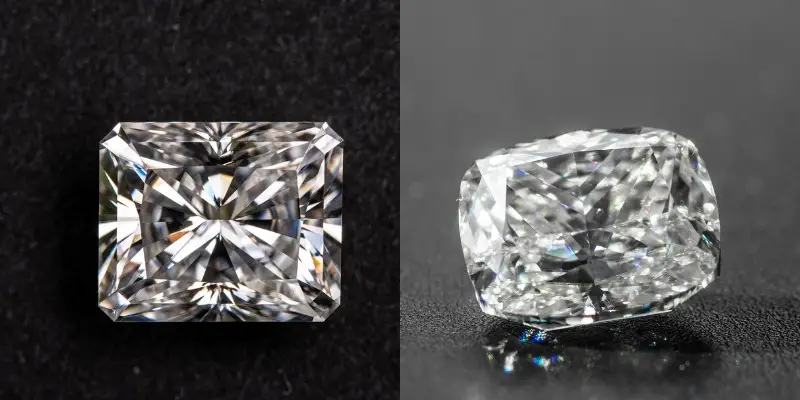
6. Cushion cuts tend to look larger than radiant cuts
Cushion cut diamonds tend to look larger than a similar-sized radiant cut. This is because a diamond is measured in carats, which only measures weight, not size in millimeters.
A radiant cut diamond carries most of its weight in the pavilion, so in the lower part and it tends to be a deep cut, compared to a cushion cut. for this reason, a cushion cut of 1 carat can appear larger than a radiant cut of 1 carat, simply because its ‘face’ will appear larger since this is a comparatively shallow cut.
Read also: Brilliant Cut VS Step Cut Diamonds
Both cushion cuts and radiant cuts work best as prong-set solitaires
Wondering what setting style works best for these diamond cuts ? These are beautiful shapes and cuts, so much so that they deserve to be showcased on their own. Prong settings are superb both for cushion and radiant cuts, and they have beveled corners so the prongs will seem part of the diamond.
We’re partial to double prong settings, especially with a plain band that will let the diamond’s cut take center stage. Of course a pave band is always going to be fabulous, but perhaps micropave would work best in that case. Going for the dainty, sparkly look.

I’m the main author for jewelrymaterialguide.com. I started this site after we did tons of research before our wedding and noticed that there is information about rings, jewelry, and so on that is really hard to find on the internet.

